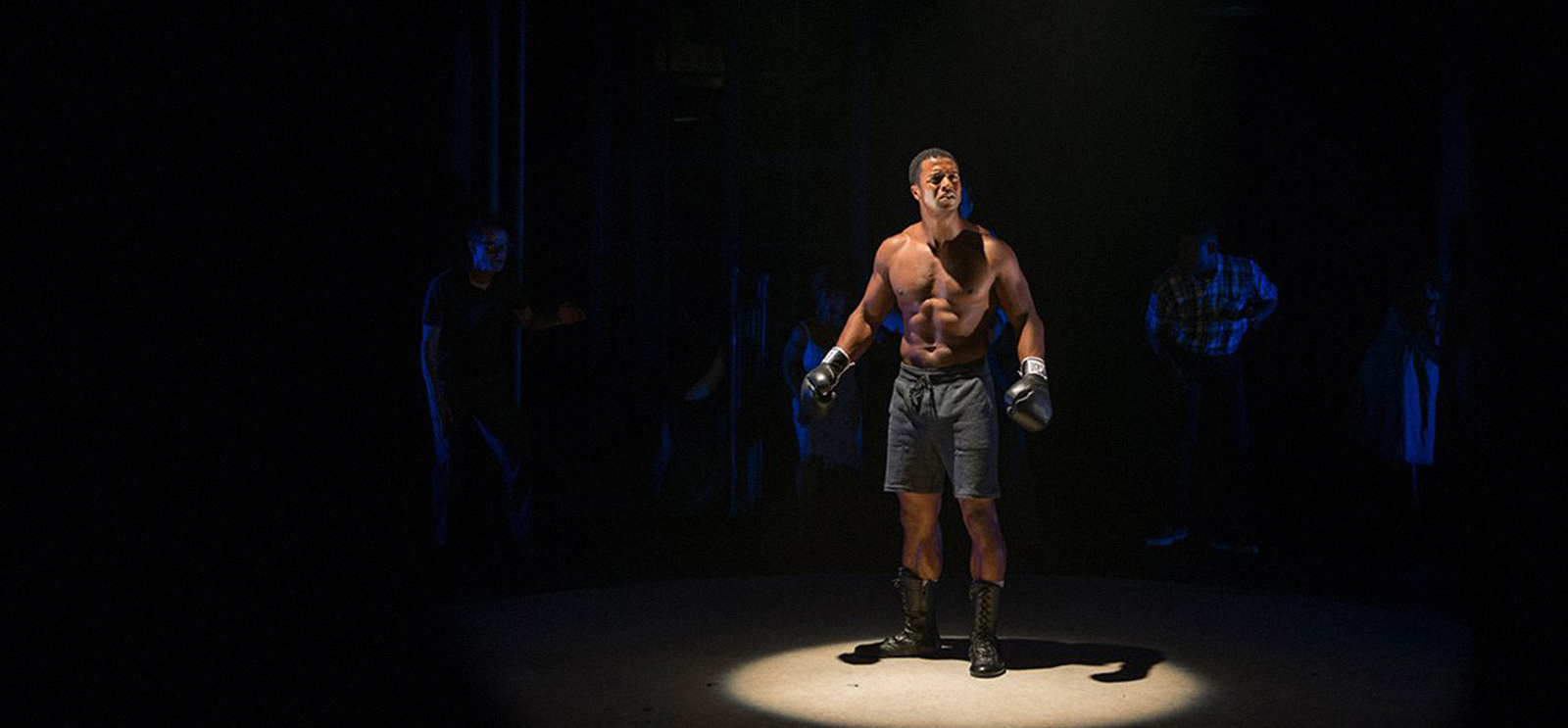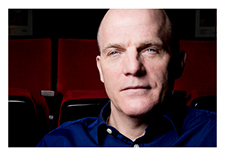
Actor Kamal Angelo Bolden in Court Theatre’s Man in the Ring, directed by Charles Newell. (Courtesy Court Theatre)
Below: Portrait of Newell. (Courtesy Court Theatre)
Court Theatre’s Charles Newell gives Core students a director’s-eye view.
 As students trickle into a Logan Center classroom, professor David Levin is busy arranging chairs and tables. When he’s done, the 14 students in his Core class Text and Performance: Adaptation and Interpretation sit on three sides of a rough square; the wall and window form the fourth side. In the middle are two chairs for Levin and the day’s guest: Charles Newell, the Marilyn F. Vitale Artistic Director of Court Theatre (right).
As students trickle into a Logan Center classroom, professor David Levin is busy arranging chairs and tables. When he’s done, the 14 students in his Core class Text and Performance: Adaptation and Interpretation sit on three sides of a rough square; the wall and window form the fourth side. In the middle are two chairs for Levin and the day’s guest: Charles Newell, the Marilyn F. Vitale Artistic Director of Court Theatre (right).
Newell is there to discuss the Court’s world premiere production of Man in the Ring, which he directed. He paces in the center before settling in his chair; surrounded by an audience of students, he and Levin could well be actors on a stage. Or they could be boxers in a ring, or participants in a children’s circle game—both of which are prominently featured in Man in the Ring.
As Levin recounts the events that led to Newell’s visit, his enthusiasm is obvious as he describes the “amazing culture of collaboration” that brought Newell there. Originally the class was going to read Antigone. But two days before class began Levin, the Addie Clark Harding Professor in Germanic Studies, Cinema and Media Studies, and Theater and Performance Studies, saw the Court’s performance of the story of boxer Emile Griffith. He thought it would match perfectly with the essays of Bertolt Brecht, who loved boxing and compared its spectacle to theater. After Levin contacted Newell, who promptly sent him the script and agreed to come speak to the class, he adjusted the syllabus accordingly.
In the classes leading up to Newell’s visit, discussion has centered on the text: the role of women in the play, the relationships between characters. The students—mostly nontheater majors—have experimented with Brechtian “interventions,” or physical interpretations, while performing scenes. At the time of Newell’s visit they’ve all seen the Court’s production, in the last week of its monthlong run. (The play closed October 16.)
Now the students have a chance to get an expert view on the transition from text to performance.
“This was sort of a dream of mine as a student,” Levin says, “to talk to the director rather than just imagining the conversation in my mind.”
For more than an hour, Newell gamely tackles questions about the titles before scenes, set design, and line readings. The answer to more than one question is simply: a small theater company doesn’t have the time or money to do it differently.
One econ major notes that she didn’t laugh while reading the script but noticed the audience laughed during the performance.
Indeed, on the page, the story of a mostly closeted gay boxer who inadvertently beats an opponent to death in the ring after the opponent calls him a homophobic slur had moments of redemption and hope, but not necessarily humor. Newell too says he was surprised by the amount of humor in the performance, though noting that it’s by no means a comedy. “The humor of it,” he says, “comes out of a deep humanity and a deep complexity of character as opposed to setting up the joke and landing the joke.” He also points out that every audience is different; one person laughing early on can set the tone. “Your energy directly affects the way the actors are performing,” he says.
A psychology major asks about the ensemble members who form a sort of contemporary Greek chorus. “They were trapping him in the ring,” she says. “Was that their role, or were they just voices in his head?” Newell says he saw them as a little bit like a traditional Greek chorus, but they do more than comment on the action; they actually drive the action forward. Since the events of the play take place in Old Emile’s memory, they are both the voices in his head and the instigators that take him into the multiple rings that make up the play. “Getting them to be the drivers of the action took a lot,” Newell says.
Newell doesn’t bow at the end, but the students give him a round of applause.
